Balkenbrij is a Dutch way of stretching out and using all the parts of an animal. Usually pork. In this recipe, I share my way of making the gray delight, and share some of the tips I have learned recreating this dish without any special tools.
Since I live in Germany now as a Dutch guy, I have to make do with making some Dutch recipes myself whenever I am feeling a bit homesick. Balkenbrij is something you have to grow up with to enjoy it, but when you do you crave it in Winter. Balkenbrij has also come to the US with Dutch immigrants and is known in America as Scrapple. In the American version, corn meal is used instead of buckwheat flour. As I do in this recipe.
Time needed for Balkenbrij: 14 hours (~2 hours prep and cooking) 12 hours refrigeration
Rommelkruid – trashspices
An important spice mix for the whole thing is a blend that was scraped up from the spice bags and put together in a spice mix. In the old days, this was then sold as a generic spice. Over the hundreds of years, however, this has evolved into a certain type of spice mix. My blend is as follows:
- White pepper (1 tbs)
- Mustard powder (1 tbs)
- Ground cloves (1/2 tbs)
- Black pepper (1 tbs)
- Nutmeg (1 tbs)
- Curry powder (1 tbs)
- Anise (1/2 tbs)
This you can all mix into a jar that you have on hand, and use throughout the recipe.
Tools needed for Balkenbrij
I tried to make this recipe accessible for everybody that does not have access to more tools or does not want to buy specialty tools just to make Balkenbrij. You can get by without a meat grinder for example.
- Sturdy pot
- Wooden spoon
- Chefs knife
- Parchment paper
- Plastic or glass container for storing/shaping with a lid
- Cutting board
- measuring cup and scale
Ingredients for Balkenbrij
- 250 grams of Buckwheat flour
- 1 liter of stock
- 200 grams of pork liver
- 200 grams of pork meat
- Thick-cut unsmoked bacon
- Rommelkruid (at least 4 tablespoons)
- Salt
- Small onion
The ingredient list has a lot of variables and can be adjusted to what you have on hand or can find at your local butcher. Balkenbrij can also be made from a wide variety of meats and cuts. And with any kind of stock you want. For my latest batches, I tend to use bio beef stock in a jar from the grocery store mixed with water that I have boiled sausages in. The German Weisswurst or white sausage leftover liquid is excellent for this.
For the meat part, you will have to experiment and see what you like. I have also made it with just liver, or just pork neck steaks. You can also do it with other organ meat than the liver, and use kidneys, heart, or also just start with minced meat. This recipe evolved to use up all the leftover bits after the butchering season in winter, so it can be adapted to your tastes and needs.
Recipe for Balkenbrij
Cut the onion in a fine dice and add to your stock with the uncut meat, two tablespoons of your rommelkruid, and bring to a gentle simmer. Cook it for hour or until all of the meat is thoroughly cooked. After cooking remove your meat and cut it up as finely as you can get it with your chefs knife. Or if you have one, your meat grinder. Add your meat back in to the stock and bring back to the boil.
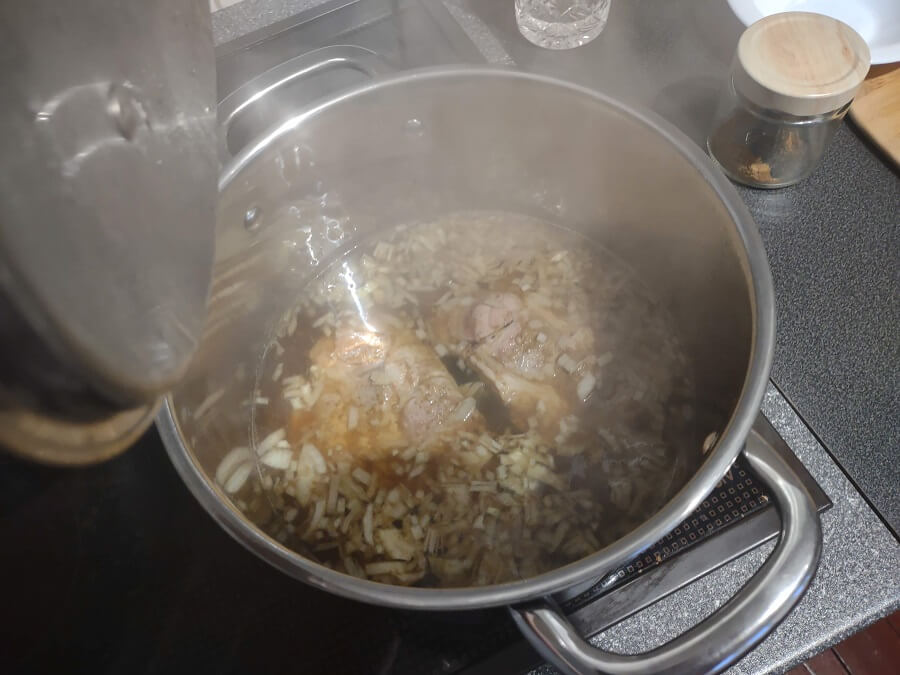
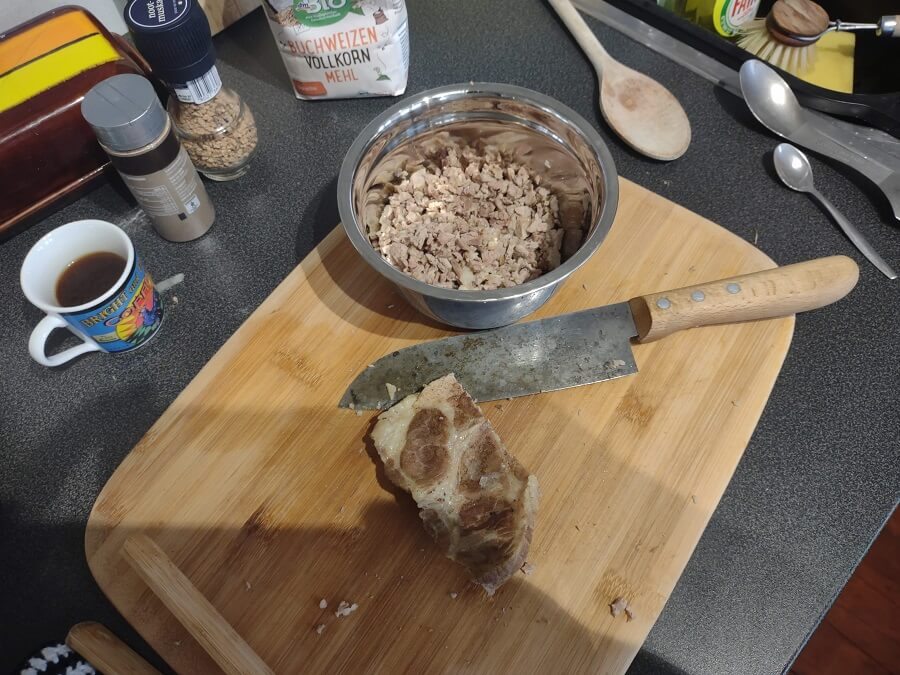
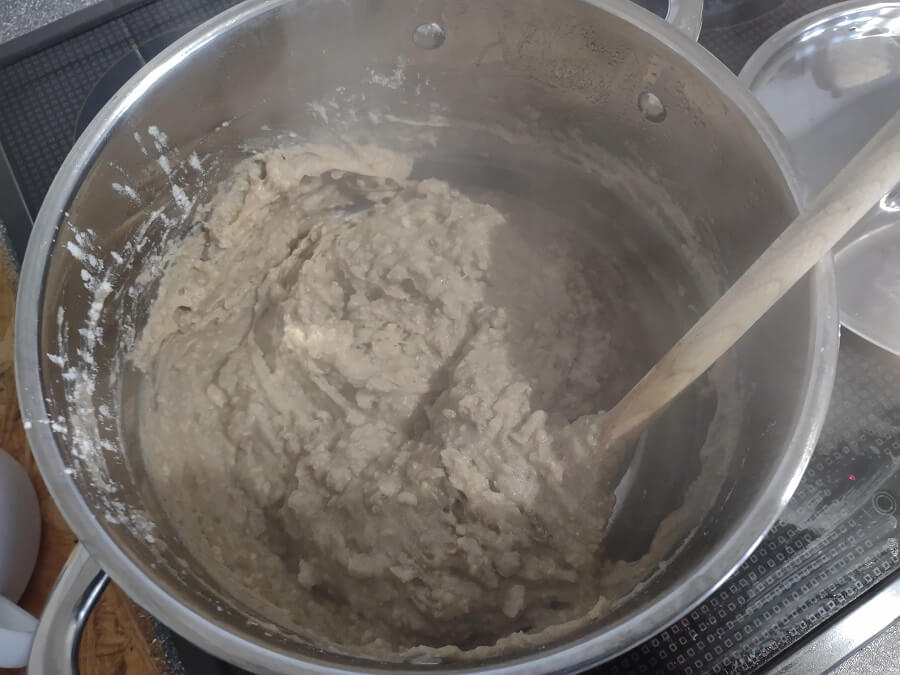
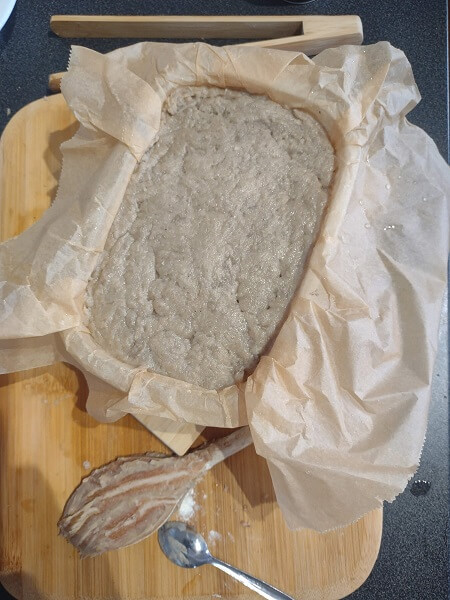
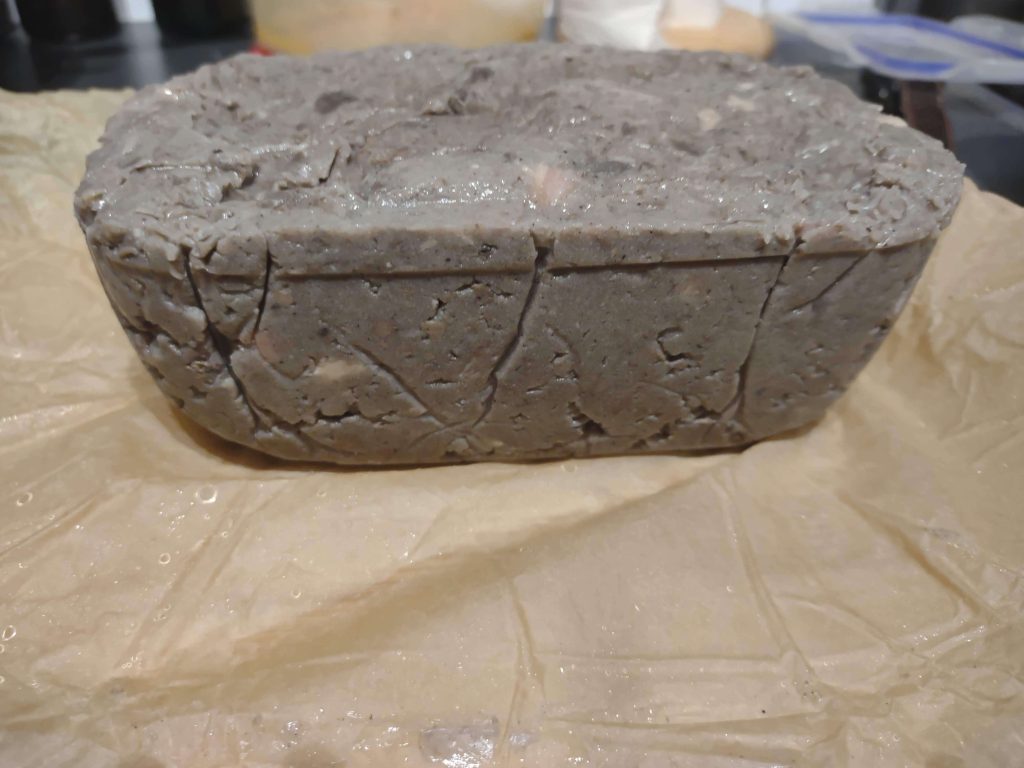
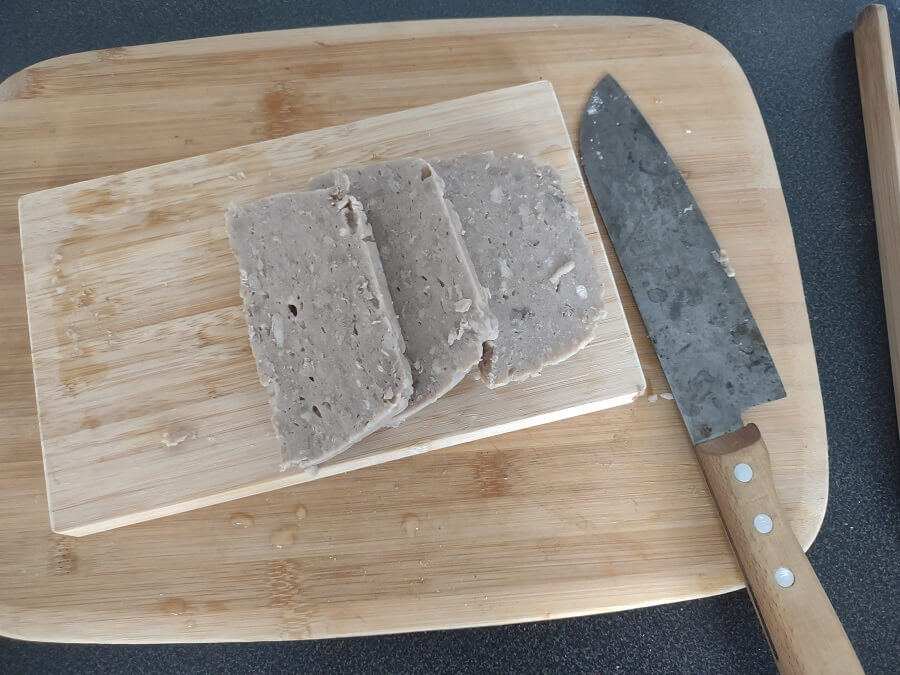
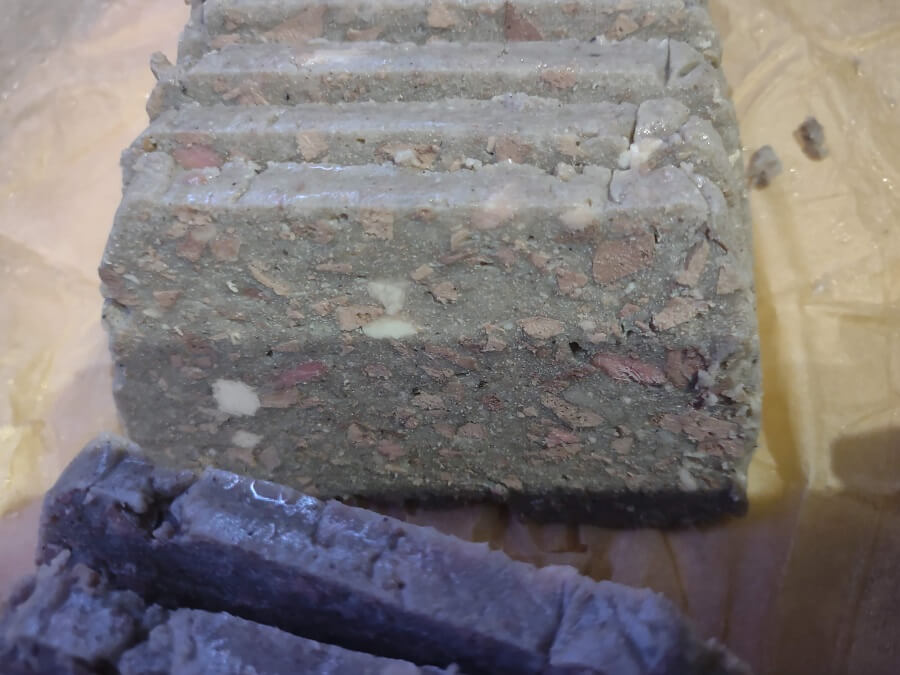
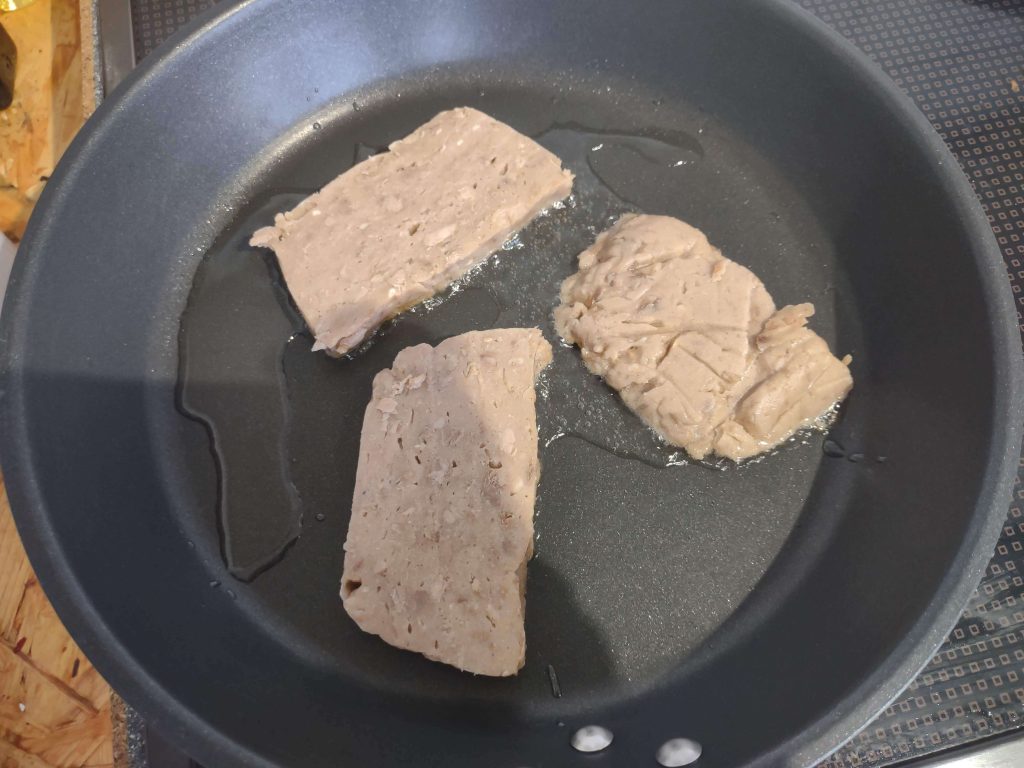
Once boiling, add the buckwheat flour gradually and while stirring with your wooden spoon. Cook for 15 minutes on low heat while continually stirring the Balkenbrij. This will be a bit of an exercise. It will boil again and may sputter a bit, so be careful not to get any burns. During this time you can also add in your remaining two tablespoons of your Rommelkruid and mix it in. As well as trying a bit for salt. Depending on your stock you may need to add some more salt and pepper at this stage.
After the 15 minutes you know when the Balkenbrij is done when your spoon stands up in the mixture.
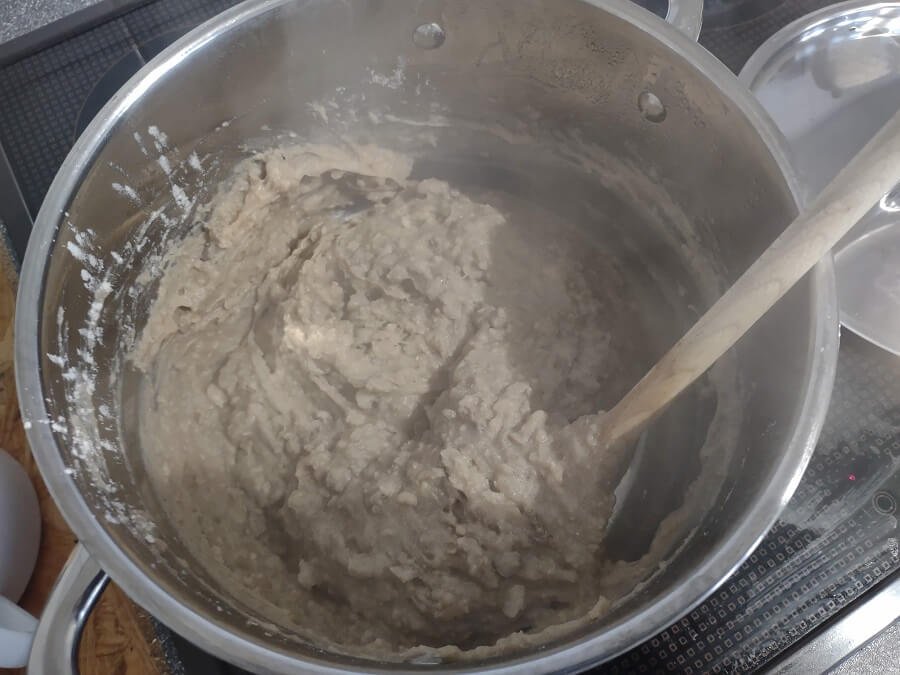
Transfer to the container with a lid, lined with the parchment paper. And refrigerate overnight.
After the night in the fridge, you can take it out of the container and cut it into centimeter-thick slices. Or however thick you like. Optionally, you can dredge the slices with flour, but I always do it without. And fry them in a good two tablespoons of butter. Preferably full fat. Until a crispy outside layer forms.
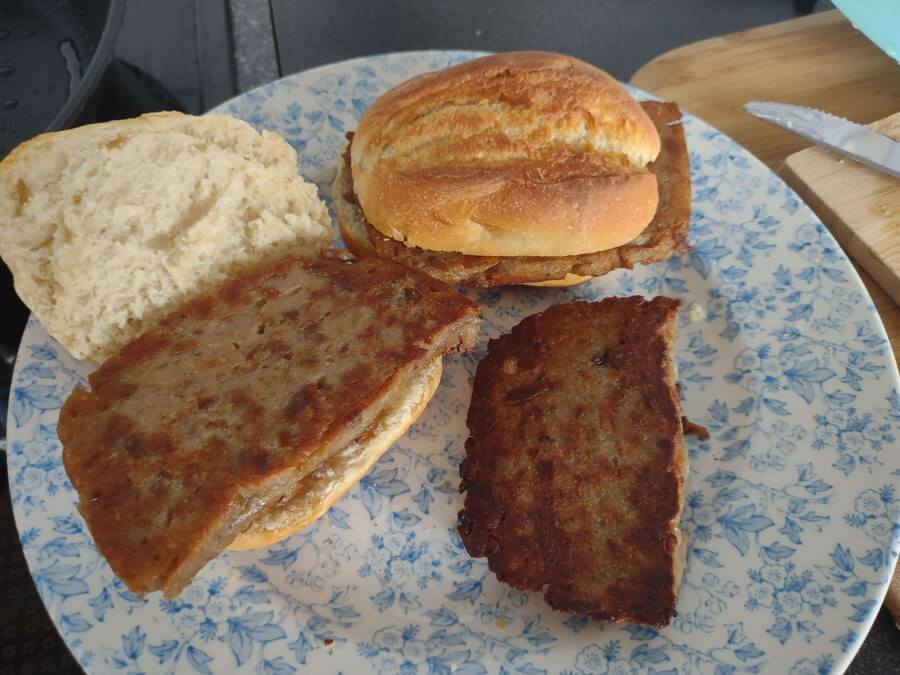
Eat open-faced on a slice of bread with a good knob of butter, or add to a roll. Serve with mustard and pickled onions. Or go the sweet way and add syrup. I don’t like it sweet, however, but to each their own.
Hope you enjoy!

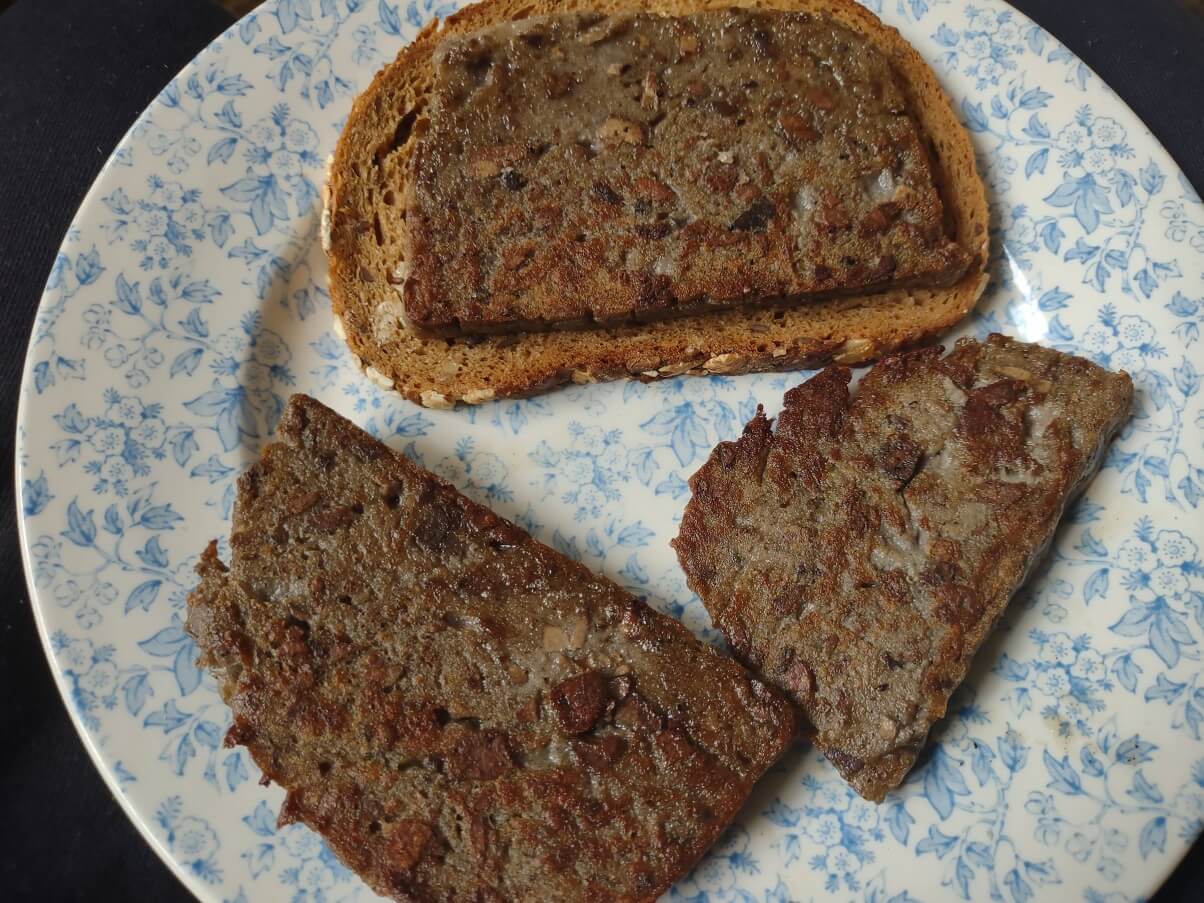
Hi there!
Wanted to thank you so much for this recipe and information on the Balkenbrij & Rommelkruid. I was born in Holland in 1952 and emigrated with my parents at the age of 6 months in 1953 via the SS Waterman. Making Balkenbrij in the late fall or winter was a staple for our family as we generally had a pig and slaughtered it at that time. When we were kids, we used to think making Balkenbrij was gross, but we didn’t mind enjoying the end result, all crispy after being fried in home-made lard. I made balkenbrij with my Dad, my Canadian husband and our son a number of years back and enjoyed the experience. Pigs heads are much more difficult to get these day, as a result of BSE, so your use of alternate meats to replace the head is particularly useful. I have just sent a message to our son and are planning to make some Balkenbrij with him and our grand children in January of 2024. Thank-you for your information – this has played a crucial part in being able to continue this tradition in our family. I can feel my Dad’s presence in your post – he died in 2010. Again, keep up your good work in posting this important information.
Hey Mary,
Thanks for sharing your history with Balkenbrij and the compliment. Means a lot to me and motivates me to publish more content!
I shared your comment with my family and especially my grandfather (opa); he enjoyed reading it. Food can form an emotional connection to your past, and typical and simple recipes like this are a favorite of mine to transport me back to where I came from.
Enjoy making the Balkenbrij in January, and please share a picture if you do! I would love to see how it turned out.
Cheers,
Frank
I was born in Limburg and used pig blood for mixing It gives it a nicer color and flavor I make it here every year about 20-25 lb and freeze most of it
In the south and east of the Netherlands they indeed make it with an addition of blood, the region where I come from, Gelderland, does it without. If you have a specific recipe please share it!